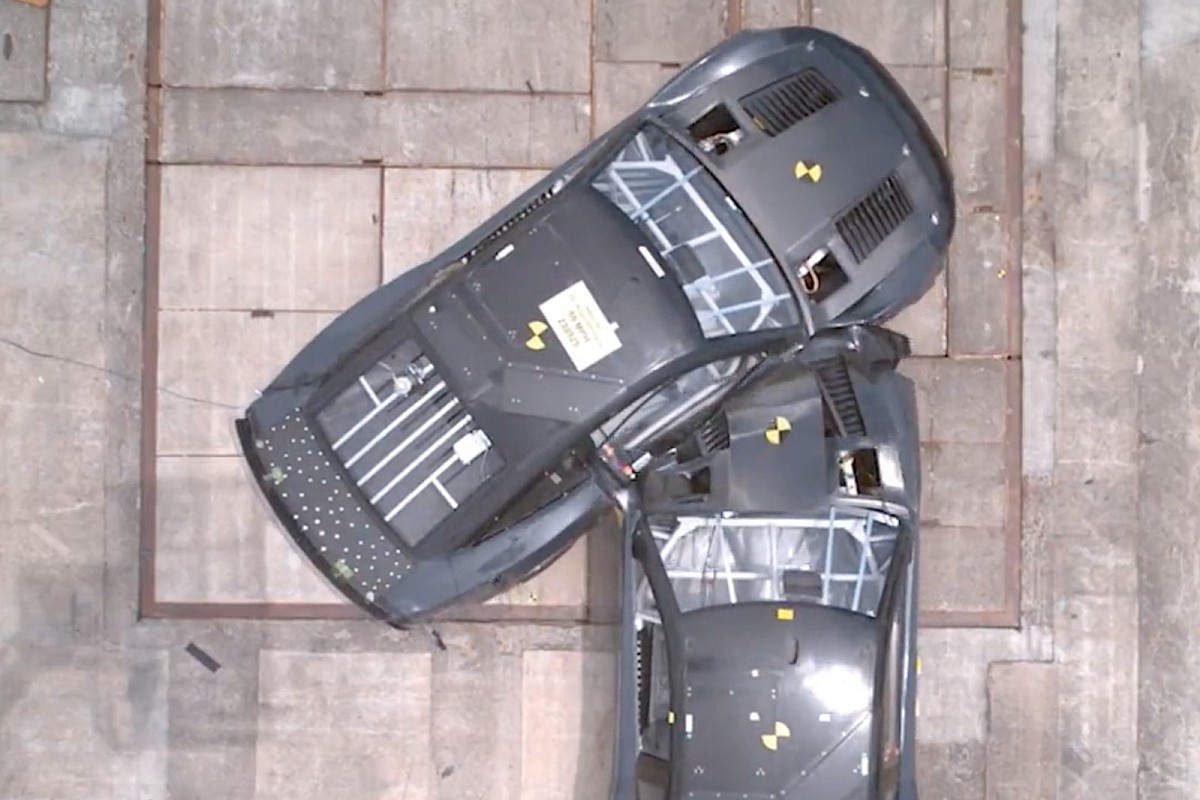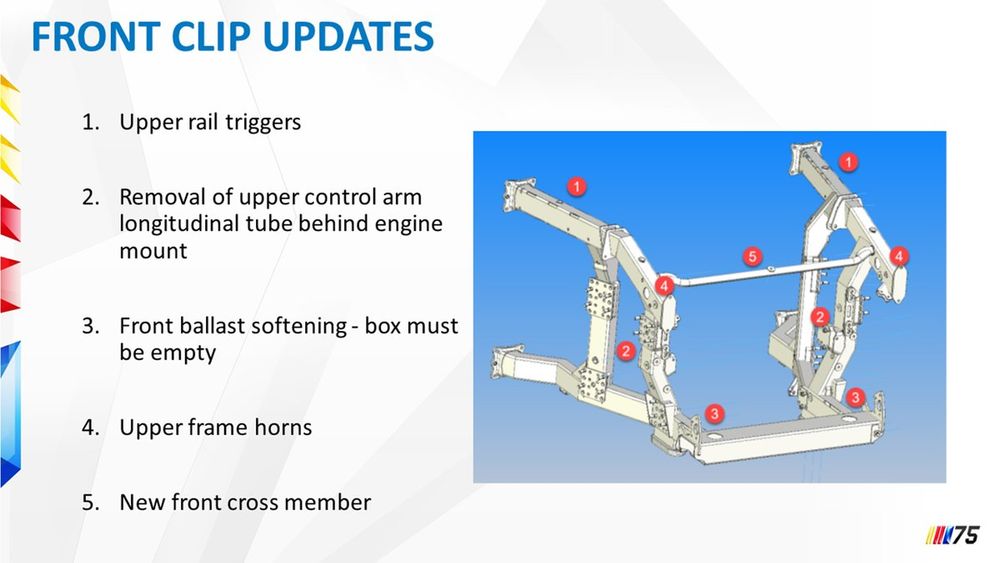
The changes come as a result of NASCAR’s ongoing collection of on-track data with the car as well as from a study of the vicious wreck involving Kyle Larson and Ryan Preece in last month’s race at Talladega, Ala.
The updates, which center around center section and front clips of the cars, will go into effect ahead of the July race at Atlanta Motor Speedway. NASCAR will assist teams in handling the cost of the changes.
The center section – or driver cockpit area – will see a new right-side steel door plate installed, two left-side door gussets (brackets used to increase durability) and an additional tube in the left-side main cage.

These changes stem from evaluation of the Larson/Preece incident.
“The 5/41 was just a very severe crash on the track and made us take sort of a fresh look at the right side,” said Dr. John Patalak, NASCAR’s vice president of safety engineering.
“The thing we looked at here was the difference in speed between the two cars (59 mph). It was almost 60 mph, which is really hard to find on the race track. It’s very rare in our racing that you have cars with a delta of 60 mph.
“So, when you have impacts like that occur, it’s very challenging to both cars.”
In addition to the changes to the center section, NASCAR is also mandating softening of the front clip and front struts through the addition of upper rail triggers, removal of an upper control arm, emptying of the front ballast box, upper frame horns and a new front cross member.

“Overall, the simplified version is, we are increasing the amount of crush that the front clip will be capable of. That’s all an effort to reduce the accelerations that the center section and the driver will be exposed to during these front crashes,” Patalak said.
“Whenever we see opportunities to do better on the race track for the safety of the drivers, we’re always pursuing that. That’s continuous for us.”
NASCAR undertook crash tests at the Transportation Research Center in Ohio after collecting GPS, crash data, and telemetry from the Larson/Preece accident.
The result of the tests was both a measurable and visible difference in how the side of the car withstood a similar impact.
Patalak said the Next Gen car will do a better job in the future taking both frontal and side impacts.
“The car has to do its job. It’s an important role but it’s certainly not largest role,” Patalak said. “The major, big improvements come from the driver restraint system.
“We are focused on the car and we are making it better but we also have projects running on head-and-neck restraints and helmets and head surround foams and seat inserts and seat mounting.
“We’re still trying to push the envelope forward in all of those areas."
NASCAR announces significant safety updates to the Next Gen car following the crash involving the Nos. 5 and 41 cars at Talladega.
— NASCAR (@NASCAR) June 8, 2023
These changes are set to debut at Atlanta Motor Speedway. pic.twitter.com/bPoOGMRSGb







